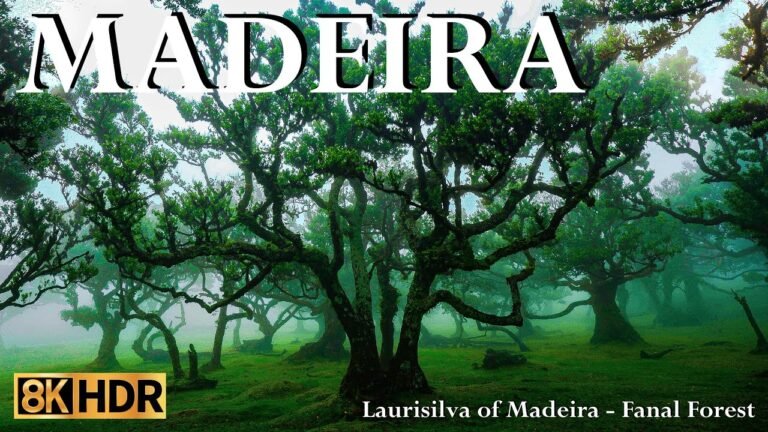
The Laurisilva of Madeira is an outstanding relict of a previously widespread laurel forest type, which covered much of Southern Europe 15-40 million years ago. The forest of the property completely covers a series of very steep, V-shaped valleys leading from the plateau and east-west ridge in the centre of the island to the north coast. The forests of the property and their associated biological and ecological process are largely undisturbed, and play a predominant role in the island´s hydrological balance. The forest is mainly comprised of evergreen trees and bushes, with flat, dark green leaves. The property provides a wealth of ecological niches, complex food webs and examples of co-evolution of species. A range of climax vegetation communities such as the “Til Laurisilva”, the “Barbusano Laurisilva” and the “Vinhático Laurisilva”, have been identified within the property. Ancient trees in the valley bottoms, waterfalls and cliffs add to the experience of the values of the property.
The Laurisilva of Madeira is an outstanding relict of a previously widespread laurel forest type. It is the largest surviving area of laurel forest and is believed to be 90% primary forest. It contains a unique suite of plants and animals, including many endemic species such as the Madeiran long-toed pigeon.
The Laurisilva of Madeira, within the Parque Natural da Madeira (Madeira Natural Park) conserves the largest surviving area of primary laurel forest or “laurisilva”, a vegetation type that is now confined to the Azores, Madeira and the Canary Islands. These forests display a wealth of ecological niches, intact ecosystem processes, and play a predominant role in maintaining the hydrological balance on the Island of Madeira. The property has great importance for biodiversity conservation with at least 76 vascular plant species endemic to Madeira occurring in the property, together with a high number of endemic invertebrates and two endemic birds including the emblematic Madeiran Laurel Pigeon.
The Laurisilva of Madeira is a place of importance for its biological diversity. A large proportion of its plants and animals are unique to the laurel forest, and it is larger than and with significant differences to other laurel forest areas. Endemic trees belonging to the Lauraceae family such as the Barbusano Apollonias barbujana ssp. Barbujana, the Laurel Laurus novocanariensis, the Til Ocotea foetens and the Vinhático Persea indica are dominant. Other endemic plants include plants such as Pride of Madeira Echium candicans, Honey Spurge Euphorbia mellifera, Madeira Foxglove Isoplexis spectrum and Musschia wollastonii. Ferns abound in the shadowy valleys and bryophytes cover large areas of the soil, banks, rocks and tree trunks. Around 13 liverwort species and 20 moss species are noted as threatened at a European scale, while abundant lichens are indicative of high environmental quality and the absence of pollution. Vertebrate species include a limited number of species with high endemism, including two rare species of bats, the Madeira Pipistrelle Pipistrellus maderensis and the Leisler’s Bat Nyctalus leisleri verrucosus and several birds, such as the Madeira Laurel Pigeon Columba trocaz, the Madeiran Firecrest Regulus madeirensis and the Madeiran Chaffinch Fingilla coelebs madeirensis. In the Laurisilva there are more than 500 endemic species of invertebrates, including insects, arachnids and mollusks.
The property includes the areas of primary laurisilva remaining on Madeira. Its boundaries were defined after an exhaustive field study to identify the most significant areas of remaining vegetation. Most of the property is believed to have never been felled and includes some massive old trees, possibly over 800 years old, which have been growing since before the island was settled. Goats and sheep, which caused some damage in the past, have now been eradicated from the area.